Craft commissions can be very rewarding for designer makers as they push you creatively, offer a different income stream and can be hugely meaningful for you and your client!
But … many creatives struggle to manage their craft commissions. Either with getting the costing & pricing wrong, or struggling with time management, or with coping with changing demands of the customer. It’s really important that before embarking on the creative commission process you know exactly how to manage your craft commissions from start to finish. We asked two creative professionals to share how they manage their craft commissions:
Rauni Higson – Silversmith
Rauni Higson is one of Britain’s leading silversmiths. Originally trained in Finland, her studio is located in the dramatic landscape of Snowdonia, a rich backdrop of mountainous crags and rugged coastline that inform her work.
When did you start taking commissions?
“I’ve taken commissions ever since I can remember. I was already doing them when I was a student.
Craft commissions have been a really crucial part of how I’ve developed my practice, my skills and my business. I’ve always used commissioning as a way to extend myself, to push my limits and stretch my comfort zone. Sometimes, I’ve pushed too hard, if I’m honest, but I’ve learned a lot, and I quite enjoy the adrenaline rollercoaster.
In the early days, I deliberately used commissions as learning experiences or opportunities to develop technically and extend my skills. I’m not necessarily recommending this for everyone, I certainly was grossly underpaid at times for commissions because I was stretching myself, for my own reasons, eyes wide open.
Over time, this developed into a methodology for doing commissions, which has become the backbone of my business.”
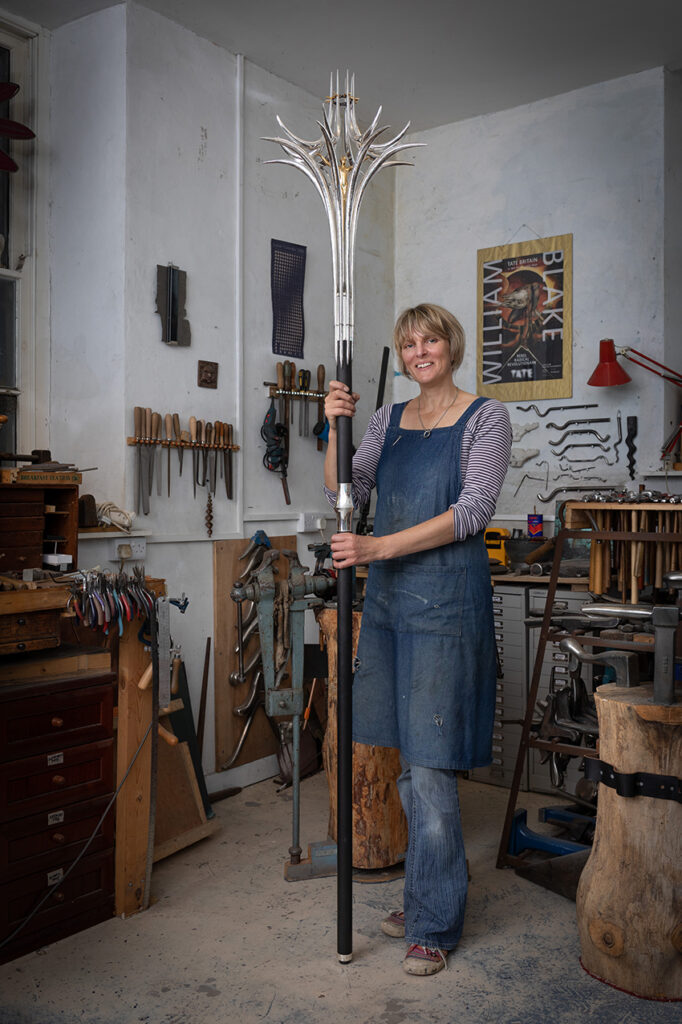
How do you market your commissions?
“A lot of the jobs I’ve done have come through word of mouth and referrals, by people seeing my commissioned work, so in a way, they ARE marketing because my work is a talking point in places that I would never actually be myself.
I market commissions by showcasing them on my website, so people can see what happens from the design brief, the concept idea, through design development, and the making process, to the finished piece. I show snapshots of the whole process so people can understand the process of commissioning and how one-off the pieces really are, via my website, Instagram, and I also tell the stories a bit more deeply to my mailing list via my ‘Full Moon Periodical’.
Projects get featured online or in print, on showcase websites, or borrowed back and put on exhibition. Generally, the pieces have a life of their own, often they are quite public as a lot of the work I do is for commemoration or celebration, so it is seen or displayed out in the world.”
How do you manage your commissions?
“It starts with meeting (online or in person) to connect. Nowadays, I don’t design without having a non-returnable design fee up front because for me, the design process is massive. It’s very involved, I do drawings and models, development experiments and prototypes, so I don’t start all of that without a commitment from the client. I do prefer stage payments, and the stages are…
1. Discussion of concept ideas (no obligation)
2. Design development (commitment)
3. Design sign off
4. The making process
5. Delivery (to a happy client).
I do progress reports to keep in touch with the client throughout the commissioning process. With open communication any problems can be swerved before they arise, and everybody involved can feel confident about the progression of the project.”
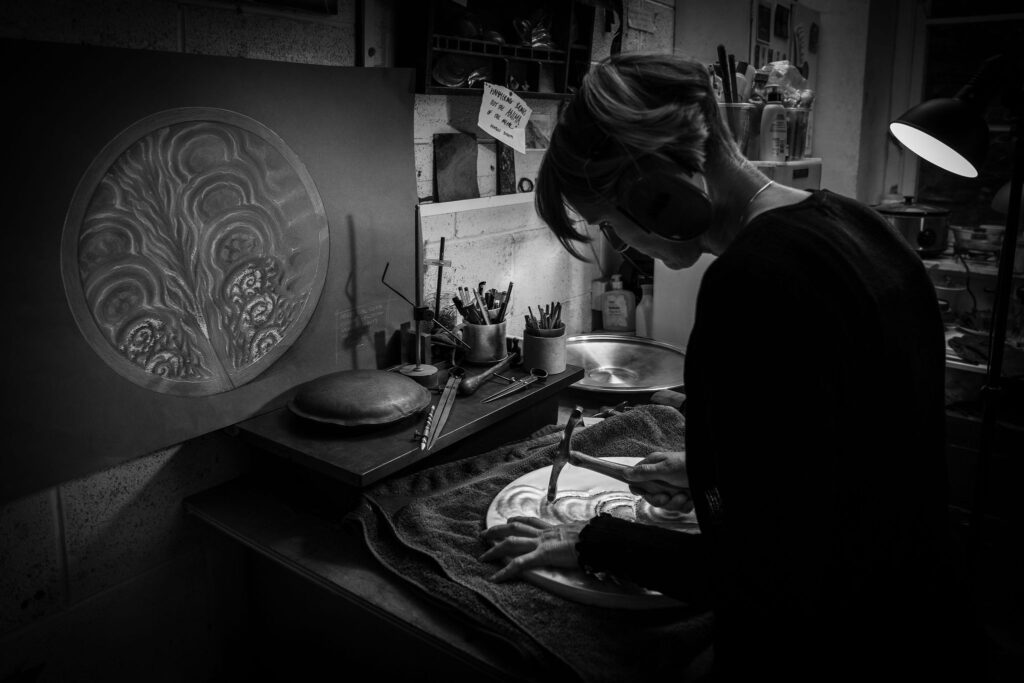
How do you price your commissions?
“Well, that’s the thorny issue, isn’t it? Am I designing and working to a set budget or am I designing to a brief and then telling the client what it’s going to cost? One-offs, particularly large-scale silver pieces, take a very long time. It’s a waste of time and energy not to get this straight at the beginning.
I quite like the clarity of working to a budget, so if the client has a budget in mind, I want to know what it is at the start, and I can design according to their budget, or use it as a starting point for options. I think it’s good to have an idea of your minimum price for doing a commission, and then have a range, depending on how involved the project is, to go up from there.
Really the only way to price them is to have experience of having done similar work. There’s always guesswork involved with one-offs, but experience helps.
Keep notes on projects and use them to inform the next ones. I have a dedicated sketchbook per project, and just scrawl everything in there, sketches, diagrams, cost of materials, phone numbers, and crucially, insights.
You’re working on the basis of projecting what it’s likely to be. I have a costing spreadsheet with boxes for all the potential costs, subcontractors, the actual material costs, the number of days or hours I think each process is likely to take, every bit of the process, add that all up, add a contingency and add a profit.
This document can then be checked back afterwards to see how optimistic it was, what actually happened, and over time you build up a picture of how it works. You adjust over time, with experience.
Always add a contingency because things happen and things take longer than you imagine. Over time it gets more accurate and you gain confidence.“
What are the benefits of commissions for your business?
“I’ve built my business on commissions.
I happen to like doing them, not everyone does. I really enjoy making when I’m responding to someone’s need, and I can do some of my best work when I’m responding to a brief, even though I absolutely love working for myself as well. I categorise that as my Art, and I approach commissions as a combination of art and business.
Some of my best work has been commissions. I’ve pushed myself really hard to do really spectacular things, which I wouldn’t have done in that way if I didn’t have the client and a sense of the piece being used and enjoyed, potentially seen by many people for many years to come. That’s a good motivation for me to pull something special out of the bag. I really enjoy that level of challenge.
I get a huge buzz when I hand over the piece and the recipient is blown away because they couldn’t imagine it before they saw it, even though they asked me to do it. It’s so sweet when it’s better than either of us imagined. That sense of not just satisfying a brief and producing something, but being able to produce something that goes way above and beyond what people thought they wanted is enormously satisfying and gratifying.
There’s a lot of practical benefits also, I’m not carrying loads of stock or making things that may or may not sell. I’m concentrating on pieces that already have a home when I start them.“
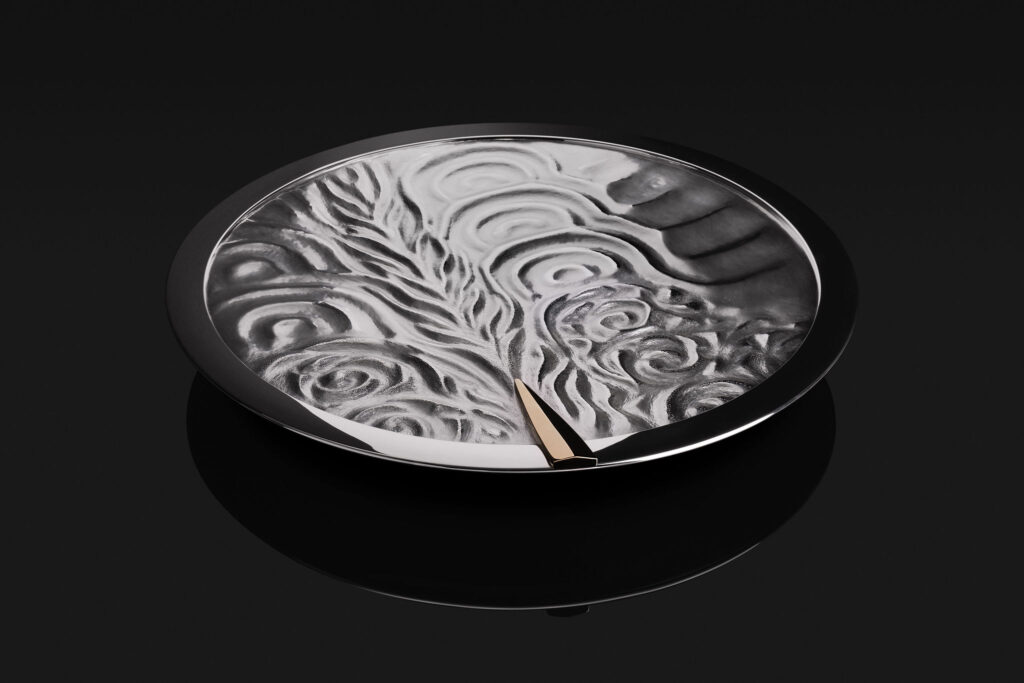
What are your tips for creatives just starting out with commissions?
“Communicate, communicate, communicate! Clarify. Don’t underestimate how easy it is to have misunderstandings. What appears obvious to you is not obvious to your client. What appears obvious to your client is not necessarily obvious to you.
It’s a meeting of cultures often, for example, an artist maker and a corporation or an institution. Clear communication and a clear process is crucial.
Expect the unexpected, try it in a small way first, and manage your time, plan backwards from a deadline, and add contingency of both time and money to everything.
Expect it to take longer than you think it’s going to take, that’s normal, so there’s nothing wrong with you if that’s what happens.
Learn from each project and apply your learnings to the next one.“
Valerie Wartelle – Textile Artist
Valérie Wartelle’s practice is rooted in the traditional craft of wet felting and the manipulation of textiles as an expressive art form. Taking the rural environment as her inspiration, she draws on its colour, texture and form to create evocative semi-abstract landscapes rich in climate. The compositions are built in layers, hinting at what may lie beneath, and use translucency and light to create absorbing moods. These are highly textured felt pieces in which cloth is embedded and threads unravelled, as a painter with her brush.
When did you start taking commissions?
“Quite early on after setting up my practice, I had requests for bespoke pieces. I found then the experience rather stressful and unrewarding, and pretty much deflected any enquiry coming my way. I now realise, it likely was because I had no trusted process in place.
After exhibiting at Collect 2022 with the QEST gallery, I had several enquiries. I knew then I had to raise my game if I wanted to capitalise on it – I needed to develop systems and templates I could rely on. Fortuitously, The Design Trust were then launching their new Creative Commissioning course, and I eagerly signed up to it.“
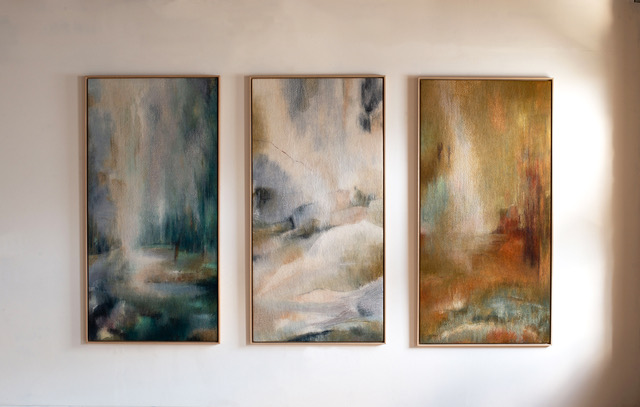
How do you market your commissions?
“In the main, commissioning projects come about from individuals already familiar with my work either through direct enquiries, or on the back of a direct mail out. For example, I followed up on the mailing list garnered at Collect 2022 with a direct email reminding them of my work, and with an invitation to meet up if / when visiting Collect 2023. This alone generated a couple of new enquiries.
In addition, ahead of a solo exhibition held last autumn, I created an ‘Introduction Pack’ for a postal mailout to galleries / interior designers / consultants. The document included an invitation to the show along with a commissioning page outlining my process with a case study of a recent commission.
Whilst the opportunity for commissions is mentioned in my newsletters and website, I have done no promotion on social media. There will however soon be a commissioning page on my website!”
How do you manage your commissioning process?
“Following a commissioning enquiry, I will first arrange a meeting / Zoom call to discuss the brief and gather the necessary information to develop a proposal. The Commission Proposal will outline the brief and the different phases of the commission process, (Phase 1: Design Concept; Phase 2: Creation; Phase 3: Delivery) including time frame, fee and payment terms. Once agreed, I send a Commission Agreement with more details and key dates about the project to be signed by both parties.
I create one-off artworks and before embarking on a project, it is essential that both parties have the same understanding of what is intended and expected from the artwork, (subject of course to some level of creative license where required). Phase 1 Design Concept is therefore a critical part of the process. I initially spend some time drawing up to 3 design ideas to discuss and agree on, before delving into the making of the artwork.
Once completed, I will aim to deliver the work myself, time and distance permitting. I will present them with their artwork, certificate of authenticity, as well as gifting them a print of their chosen drawing as a memento of our collaboration.”
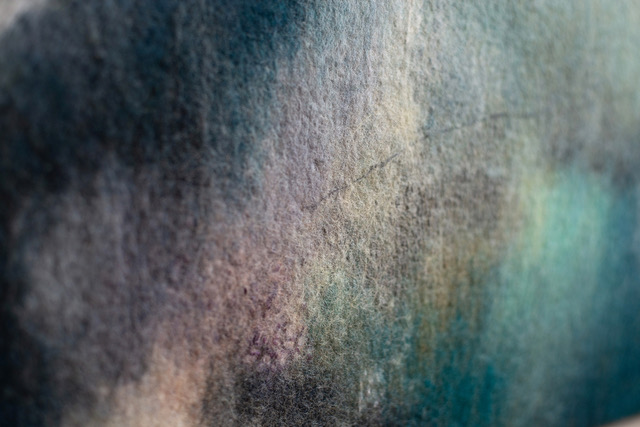
How do you price your commissions?
“I use the Commission Financial Forecast template shared on the Creative Commissioning course by Patricia. I adapted it to suit my process and have used it ever since when drafting a proposal.
It allows me to identify all costs associated to each phase of the commissioning process (e.g.: admin, design, materials, making, delivery, insurance, etc). I am then able to adjust it in line with the budget range if needed. Crucially, the spreadsheet gives me a realistic quota of ‘studio time’ I can monitor and (try to) keep to.“
What are the benefits of commissions for your business?
“The number of commissioned works I take on has increased over the last couple of years, and now forms a key part of my practice. Being able to cost and schedule commissions effectively has taken much of the stress away – I feel much more confident taking them on, in the knowledge of a positive outcome.
Offering such a bespoke service is of course more challenging, and a commitment for both parties; but it also allows for a closer collaboration with clients, sharing a unique story and meaningful experience.”
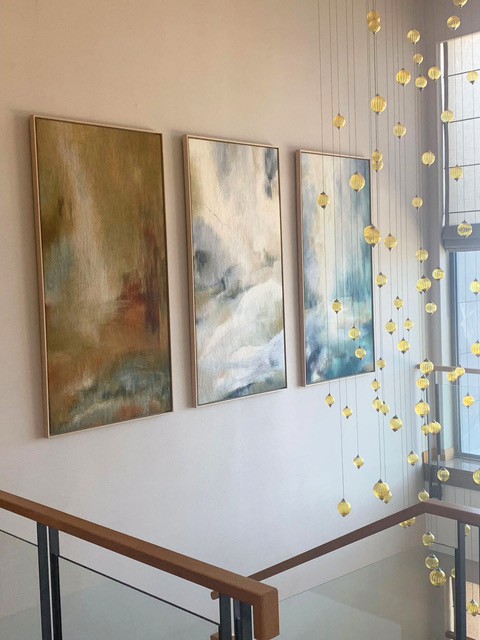
Have you got any tips for creatives starting out to work on commissions?
Tip 1: Identify a workable timeline and a ballpark budget from the word go helps save precious time and shape a viable proposal.
Tip 2: Agree at the first opportunity on essential contact details and best ways to keep in touch to support more responsive and fluid exchanges.
Tip 3: Keeping the customer updated on progress throughout the process is good practice. Clear and transparent communication helps identify and iron out any concerns or delays, as let’s face it, life happens no matter what! I therefore include in my agreement a schedule of ‘keeping in touch’ dates, carried out via email, telephone / video call, and / or with photographs. The communication schedule also includes key decision-making dates (e.g frame profile selection) necessary to keep to the project’s timeline.
There’s no doubt that being more in control of the process allowed me to maximise opportunities with greater professionalism and confidence.“
If you would like to take more control of your own commissioning process, take a look at our next Creative Commissions Online Course starting 7 May 2024.
Share your questions and comments